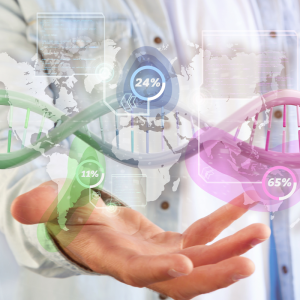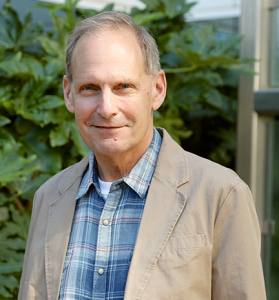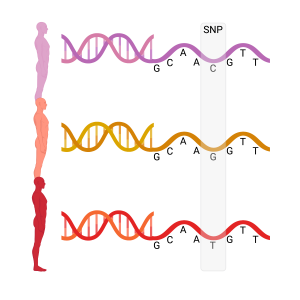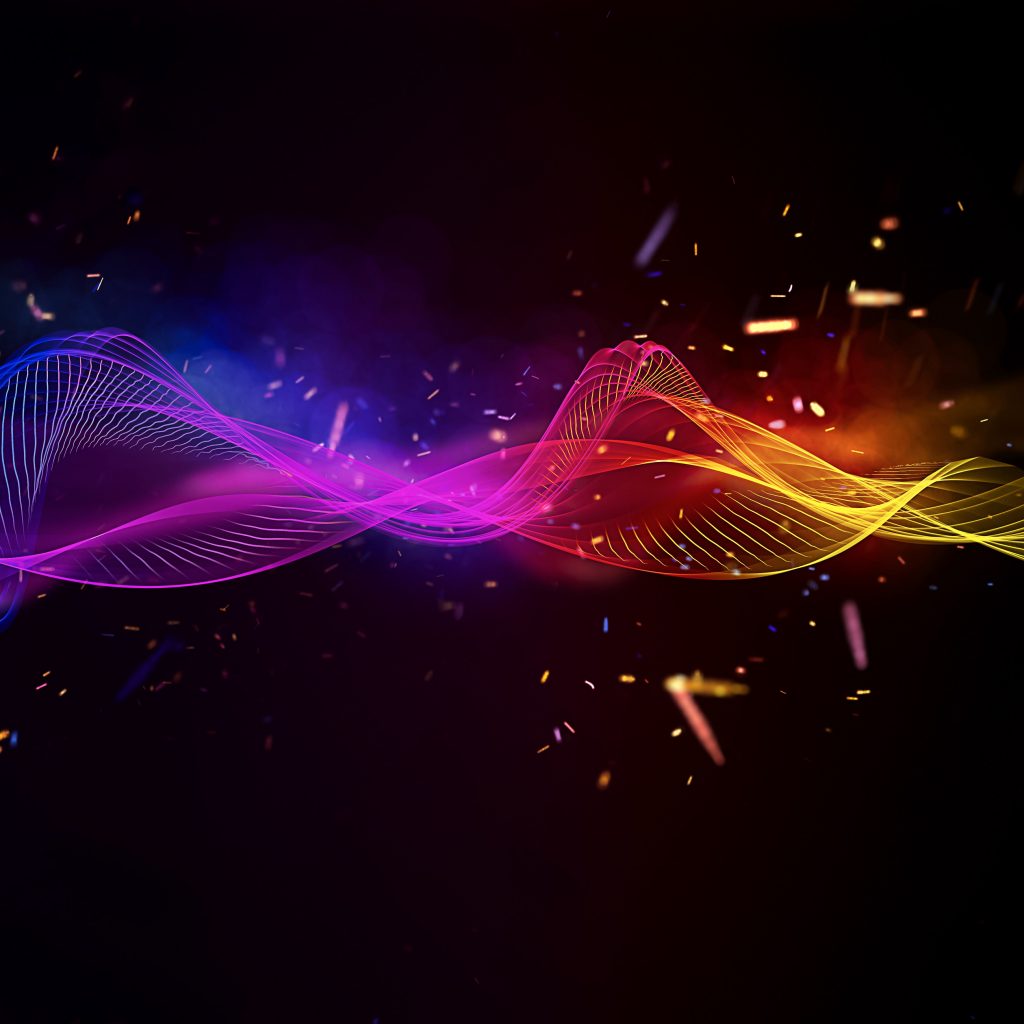

Welcome to Season 3 of Tiny Expeditions! In this season, we will journey into the world of human health and genomics, exploring the many ways that DNA influences both human health and disease. Throughout the season, we’ll dive into DNA’s role in diagnosing and treating diseases like cancer, autoimmune diseases, and neurological diseases. Our experts will also help us make sense of the ethical ramifications of the increased use of genetic testing.
But let’s not get ahead of ourselves. Let’s start at the beginning of the genetic testing revolution with the rise of direct-to-consumer ancestry testing. Genetic ancestry tests were first marketed directly to consumers in 2000 with the promise to help individuals reconstruct genealogies and investigate their personal genetic heritage.
Since then, direct-to-consumer genetic ancestry testing and diagnostic genetic testing have spawned into a multi-billion dollar industry. Here is how it works: you simply mail the company a sample of your DNA (usually a tube full of your spit) and receive a report detailing your ancestry composition. The base reports usually outline where your ancestors are likely from and what percentage of your DNA comes from each area. Should you choose so, you can also be matched with potential relatives that have also opted in for family matching.
Listen to Tiny Expeditions Season 3, Episode 1: “The Story of Humanity Written in Your DNA” to learn how genetic testing companies use your DNA to infer family relationships and hear our resident expert talk about his personal story of using his genetics to discover information about his relatives.
Behind the scenes

Dr. Greg Barsh
Greg Barsh, MD, PhD(right) and his lab are primarily focused on understanding the genetics of morphological variation in mammals, or why individuals look different from one another. This often means reaching back in time to reconstruct family trees for different species of animals to track the origin of specific traits. Lucky for us, Dr. Barsh is also passionate about human ancestry and joined us for this episode.
As Dr. Barsh explained in the episode, ancestry testing companies use a technology called a DNA chip microarray to infer relationships between individuals. Let’s dive a little deeper into this technology and learn how companies get from a tube of saliva to a complete ancestry report.
First, scientists extract the DNA from your saliva through a long series of steps, including many different chemical reactions and cycles of heating and cooling. The extracted DNA is then sequenced using a DNA chip microarray. DNA microarrays do not sequence the entire human genome, instead, they look at defined regions of the genome that are known to vary between people, called single nucleotide polymorphisms (SNPs). As their name suggests, SNPs are one-letter places where your genome varies from someone else’s genome.

Created with BioRender.com
Most genetic testing services use similar DNA microarray technologies that look at more than 600,000 SNPs throughout the genome. While this seems like a lot, it actually only represents about 0.01 percent of the DNA bases in the human genome.
Your DNA, including SNPs, is inherited from your parents. Ancestry companies can use the presence and absence of SNPs to infer relationships between two individuals or two reference sets. The more SNPs that two individuals share, the more closely related they are.
Ancestry companies compiled a large database of SNP profiles over the years and it is still growing today as more people participate. The companies collect DNA samples from people with deep ancestral roots in certain geographic regions to make what we call reference profiles. People from the same regions around the globe often share SNPs within their DNA. By comparing an individual’s DNA with many reference profiles, scientists can make inferences as to where the individual’s ancestors likely originated.
As we heard in this episode, users can also choose to have their DNA “matched” to potential living relatives. Should you do this, it is possible that like Dr. Barsh, you too could discover living relatives that you didn’t know about.
Sarah Sharman 00:00
Season Three of Tiny Expeditions is made possible through the support of our sponsor EBSCO Information Services, the leading provider of online research content search technologies and workflow tools, serving public libraries, schools, academic institutions, corporations, and medical institutions around the world. Proudly delivering information access for researchers at all levels, online and ebsco.com. That’s E-B-S-C-O dot com.
Chris Powell 00:41
Welcome to Season Three of Tiny Expeditions.
Sarah Sharman 00:44
I’m Dr. Sarah Sharman here to help you make sense of the science.
Chris Powell 00:48
And I’m Chris Powell. I’ll be your storytelling guide for this episode.
Sarah Sharman 00:51
And this season, we will explore the many ways that DNA influences human health and disease.
Chris Powell 00:56
And for today’s episode, we need a quick disclaimer, we’re going to be talking about some very famous brands and companies that you will no doubt recognize. These are genetic testing companies that offer you glimpses into your ancestral record. These companies are not sponsoring this podcast, and they in no way have an influence on what we’re saying. And we’re not endorsing these companies, we just need you to know about what they do so that we can talk about the science undergirding this industry.
Sarah Sharman 01:25
There’s no doubt at some point, that advertisements for companies show up in your social media feed that are promising to give you the long-lost secrets hidden in your family’s history. And let’s face it, we’re all intrigued. Who doesn’t want to find out they’re related to Harriet Tubman? Or Kevin Bacon? …Maybe not? How about Dolly Parton?
Chris Powell 01:45
Some of us may find a different story in our past, and some of us may find a story that’s completely different from the story that we’ve grown up thinking about ourselves. Some of us may just not want to know what’s buried in our past.
Chris Powell 02:05
Are you familiar with these companies, you can send your DNA sample off to and they can tell you about your ancestral origins?
Person on the street 02:12
Yes, but very little about it. I know about it, but not a whole lot.
Chris Powell 02:15
Okay, so what’s your general thought? Positive and negative?
Person on the street 02:19
I think it’s positive for people that want to know where they came from. And if there’s science to back it up and find it then I think that’s pretty cool.
Chris Powell 02:25
Okay, so is this something that you would ever consider doing?
Person on the street 02:31
Probably if I didn’t know, or didn’t have an idea of where I’m from.
Person on the street 02:33
Yes, I’m aware of those.
Chris Powell 02:36
Okay, cool. So what are your thoughts positive and negative?
Person on the street 02:39
I think they’re very beneficial when you’re trying to discover more about yourself, but I feel like we need more diversity in the population pool to get better genetic data on individuals, especially those of African descent.
Chris Powell 02:51
So overall, would you say your initial reaction is positive or negative to these companies?
Person on the street 02:59
I think positive initially because I know they can connect you with a lot of important parts of your identity and that sort of identity, like personal information, I think is beneficial. And then when I start to think about it, you know, what does it mean that they have all my genetic information? What kind of power does that give them? Or what does that really mean after the fact I think I’m a bit more like, concerned or hesitant about.
Chris Powell 03:31
Before we go too far down this road, let’s start with some basic questions.
Sarah Sharman 03:35
What can these companies actually tell us about ourselves? And how reliable is the science driving this billion-dollar industry?
Chris Powell 03:43
To find these answers, we sat down with a familiar voice for this podcast.
Greg Barsh 03:47
I’m Greg Barsh. I’m a faculty investigator and faculty chair at HudsonAlpha. And our lab works on a couple of different things. We work on the genetics of morphological differences, understanding what makes individuals within a species and closely related species look different from one another. But I also am very interested in and work on several aspects of genomic health.
Sarah Sharman 04:11
To set the stage, we asked Dr. Barsh, what is genealogy.
Greg Barsh 04:16
Genealogy. That’s easy. That’s how genes are related to each other. And because genes, of course, are carried in individuals, in this case, people, what we’re really talking about is how genes move from one individual to another. Because, of course, at some level, all humans are related to all other humans. So, understanding the nature of those relationships and constructing a family tree is the essence of genealogy.
Chris Powell 04:51
For as long as there have been families, people have wanted to know about their family tree. The problem is how do you find out that information? In the past, you would have to start through written or oral histories, and some of those may not be easily accessible.
Sarah Sharman 05:05
Today, DNA sequencing technology is augmenting historical records to give people a more complete picture of their family trees.
Greg Barsh 05:13
So, DNA sequencing is, of course, what everybody talks about these days because it’s gotten incredibly effective and incredibly efficient, and reasonably inexpensive. But you really don’t need DNA sequencing to study ancestry. All you need is to look at a fraction of the DNA in the genome. And that is, in fact, the way that most of these companies study ancestry is they use what is sometimes called the DNA chip, which basically looks at the identity of the DNA letters in a small fraction of the genome. All of this has been and, to some extent, still is motivated by improving human health through understanding more about the genetics of human disease. And so, the original DNA chip technology was developed, specifically to look at groups of individuals that had a disease that they thought had a genetic component, but where it wasn’t particularly obvious, so you couldn’t see it, obviously tracked down in families.
Sarah Sharman 06:30
It’s fascinating to think that the same technology scientists use to diagnose genetic diseases can also help us infer relationships between individuals, we just have to look at the data a little bit differently. Let’s learn more about the variants that help us make these connections.
Greg Barsh 06:46
So, if you look at any two individuals, on average, they have about one out of 1000 differences. Now, that doesn’t sound like very much, but because the genome is really big, about 3 billion nucleotides long. That means that between any two individuals, there are about 3 million differences, which is an awful lot. And let me just state explicitly that the more variants that two individuals share, the more closely they are related. So, as I said, you know, an individual has about 50%, or actually exactly 50% of the variance that either of their parents carried. And siblings, brothers, and sisters have about 50% of the variance between two siblings. But if you share a small number of variants, then you’re more distantly related relative to, say, the general population.
Chris Powell 07:43
So, the presence of shared variants helps predict the degree of relationship between people. But when you receive a report from these companies, you also receive a map showing the possibilities of your ancestral origin. So how is this possible?
Greg Barsh 07:56
They make use of what geneticists have accumulated and stored and shared over the last 20 years or so, which is large DNA sequence databases of individuals that are from different continents. And not only from these different continents, or sometimes we call them bio-geographic locations, but where their grandparents are from. And so, knowing that information then allows you to say, Okay, well, let’s see how many variants say I share with individuals whose ancestors are from these different continents or small regions of continents. The larger the database gets, the more diverse it gets, and the more fine-grained the companies can be with regard to where an individual’s ancestors were originally from.
Greg Barsh 08:54
So, I was actually an early customer of 23 and Me, in part because it got started in the Bay Area, where I was a faculty member. And there were people from my research group who actually worked at 23 and Me. I thought it was a great idea.
Chris Powell 09:10
The advancements in human genetics that are powering these companies may be able to connect us to relatives or show us where our ancestors are from. And this is amazing information to have especially understanding that all of our stories are different. Not everyone has the same basic information about family history.
Sarah Sharman 09:27
Dr. Barsh himself is adopted and knew little about his ancestors until he submitted his DNA to 23 and Me and learned some interesting information.
Greg Barsh 09:37
And so, my ancestry map was really pretty boring. All of my ancestors were from one region in Eastern Europe because I am of 95% Ashkenazi extraction. And that was actually no surprise to me because I was actually adopted, and I knew my adoptive parents, who themselves happened to be Ashkenazi, had told me that they worked with an adoption agency that was specifically for individuals of Jewish heritage. And so, I was not surprised at all to find that my ancestry was about 95% Ashkenazi. Now, you might ask that. Well, you know, when you looked at your DNA results, did you see anyone that you were related to? And 10 years ago? The answer was yes. You know, I had about 1000 DNA relatives. And so, initially, one might think, Oh, well, that must be so exciting, you know, you were adopted, and now you have all these new relatives. But in fact, when I looked closer, it turned out that my 1000 or so Ashkenazi DNA relatives were all third, fourth, fifth, or sixth cousins. And the reason is because all Ashkenazi, just like all humans are related to one another. And so, on average, each Ashkenazi has hundreds or thousands of third, fourth, fifth, and sixth cousins.
Chris Powell 11:17
From his initial results, Dr. Barsh received hundreds of possible connections, most of which would be distant relatives. However, as more people continue to send in their DNA, the database grows, and so do the connections. So quite a while after receiving his initial results, a potential relative reached out to him, and it turns out they’re pretty closely related.
Greg Barsh 11:39
So that’s the way things stood for me, knowing that I had about 1000, very distantly related third, fourth, fifth, and sixth cousins, until maybe three or four years ago, when somebody reached out to me and said, You know, I submitted my DNA to 23 and Me recently, and it turns out that we’re pretty closely related. We share about 25% of our variance. So, I was pretty intrigued. I knew that there might always be a close relative out there. And I was excited. And we engaged, we communicated, we became friends. So, Lisa, this is her name, and I talked about this. Lisa’s initial question was, how exactly are we related? And I said, well, you know, I’m a geneticist, I can probably figure that out. And there are a number of ways that individuals who share 25% of their DNA can be related. In this case, it turned out that Lisa and I were half-siblings, so she is my half-sister. I am her half-brother. And then the question was, well, do we share the same mother? Or do we share the same father?
Sarah Sharman 12:59
To determine if the two shared the same mother, Dr. Barsh turned to a different type of genetic technology called a mitochondrial DNA test. Females pass mitochondrial DNA down to their male and female children, but males do not. Therefore, if two people share the same mitochondrial DNA, they share the same mother.
Greg Barsh 13:18
Well, it turns out that Lisa and I had pretty different mitochondrial DNA, which meant that we didn’t have the same mother, which meant that we had to have the same father. And in fact, in this case, 23 and Me got it right. They predicted that Lisa and I were half-siblings. As I said, there are other ways that individuals can share 25% of DNA. But there, the distribution of the variants within the genome allows the companies, or really allows anyone, to infer whether 25% sharing means that two individuals are, say, half-siblings or grandparent and grandchild and in this case, it was half-siblings.
Chris Powell 14:04
As humans, many of us have an inherent sense of curiosity about our past. We want something to ground us to give us a sense of belonging and identity. We want to know our story.
Sarah Sharman 14:16
Advances in human genetics can help us fill in the gaps of our stories. But it can’t tell us the full story. At least not yet.
Greg Barsh 14:25
As more and more people, I think, get excited about genealogy and DNA testing, and send their DNA to one of these ancestry companies will find you relatives. And so again, you know, if you think about a family tree, you can think about it as a little family tree, how my immediate family is related to each other. And I think over the next, you know, 510 15 years, we’ll be able to fill in the gaps between those family trees to make an ever denser and ever more connected family tree
Chris Powell 15:03
Thank you for joining us for this tiny expedition into human genetics and ancestry. Next week, we’ll dive into the tough ethical questions surrounding our increased use of genetic information.
Sarah Sharman 15:13
Who has access to your genetic information? Can your genetic information be used against you? Or will you be denied health insurance based on information from a genetic test?
Chris Powell 15:23
Tiny Expeditions is a podcast about genetics, DNA, and inheritance from the HudsonAlpha Institute for Biotechnology. We’re a nonprofit research institution in Huntsville, Alabama.
Sarah Sharman 15:34
We’ve got a campus full of scientists doing public research alongside companies developing products and services, all with one aim to translate genomic discoveries into real-world applications that make for a healthier, more sustainable world. That’s everything from cancer research to agriculture for a changing climate.
Chris Powell 15:52
If you find this podcast interesting, please rate, review, like, and subscribe on the podcast app of your choice. And then tell someone that you listen to this interesting little story about genetics. Knowledge is better when you share it.
Sarah Sharman 16:05
Thanks again to our sponsor, EBSCO Information Services. And thanks to you, our listeners, for joining us.
Season 3 of Tiny Expeditions is made possible through the support of our sponsors:







